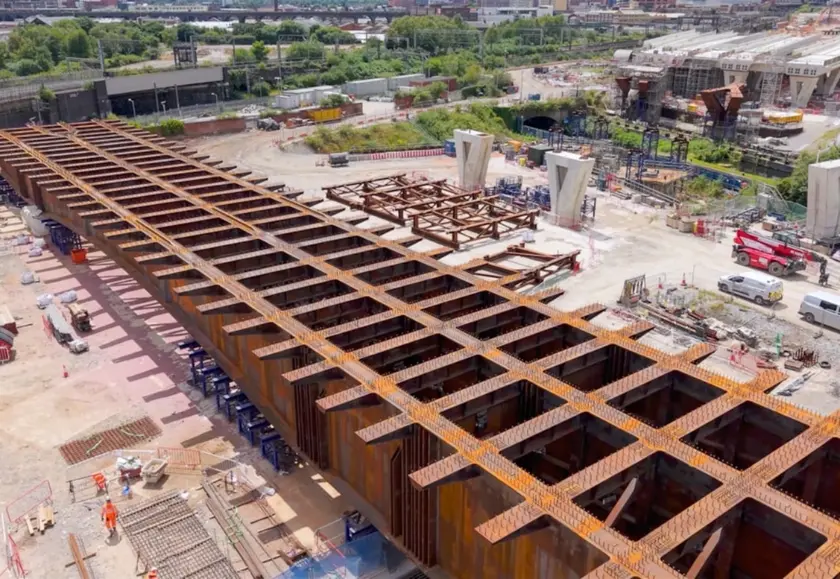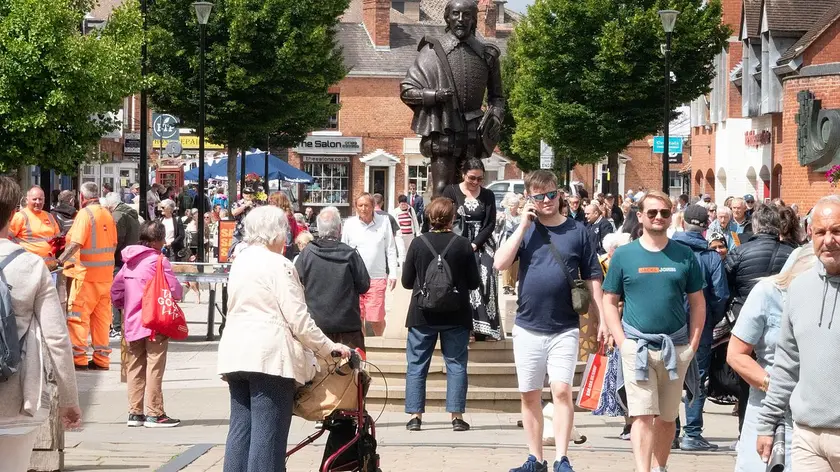T4K3.news
HS2 bridge deck moved into place at night
A 112m long 1,631-tonne HS2 bridge deck is rotated and moved into position near Digbeth Canal during night work, with lanes reopening by day.

A 1,631-tonne HS2 bridge deck is moved during a nine-night operation near Birmingham using a novel mix of SPMTs and skidding.
HS2 bridge span showcases heavy lift innovation
A 112m long HS2 bridge deck weighing 1,631 tonnes is being installed on Lawley Middleway in Birmingham after weeks of fabrication beside Digbeth Canal. Heavy lift specialists Mammoet will jack the deck onto two self-propelled modular transporters and rotate it 90 degrees before sliding it into final position over nine nights. The move is designed to minimize daytime disruption and keep traffic flowing when possible.
The deck is part of a one-mile stretch of five connected viaducts that will usher high speed trains from the Bromford Tunnel into Curzon Street Station. To limit impact on road users, night closures are planned with diversions in place to avoid the Birmingham Clean Air Zone. The operation will advance other works in the Curzon Approaches, including further viaduct moves, tunnel breakthroughs and the Saltley Viaduct construction anticipated over the next year.
Key Takeaways
"This operation is a first for BBV, combining SPMTs and a skidding system to lift, rotate and move this giant structure into place."
BBV project manager Georgios Markakis on the method.
"Over the next 12 months, the Curzon Approaches will see tunnel breakthroughs, more viaduct moves, road reopenings and the start of Saltley Viaduct construction."
Outline of near-term schedule for the project.
"The bridge is one of five viaducts bringing high-speed trains from the west portal of the Bromford Tunnel into Curzon Street Station."
HS2 project scope and role of the Curzon Approaches.
"Night work limits daytime disruption but tests the citys tolerance for late hours and safety on a busy arterial road."
Editorial reflection on urban work implications.
This lift demonstrates how large urban infrastructure projects are marrying new heavy-lift methods with city living. Using SPMTs in tandem with a push-pull skidding system shows a clear focus on precision, control and schedule discipline. It is a sign that complex projects can progress without grinding urban life to a halt when planners design around residents rather than around ant backlog of approvals.
Yet the approach also tests the limits of risk management in a crowded city setting. A single misstep or a weather delay could ripple through the schedule for Curzon Approaches and Saltley Viaduct. The real test is sustaining safety, environmental considerations and public trust as more moves unfold along this corridor.
Highlights
- Night moves forge future rails without closing the city
- Engineering precision meets urban patience
- A giant deck in a quiet hour a milestone in steel
- Heavy lift in tight spaces shows how we build for speed and safety
Public disruption risk during urban heavy lift works
Night-time road closures and heavy lifting near busy Birmingham roads could affect residents, commuters, and air quality. The project aims to minimize disruption, but the urban setting raises safety and schedule risks.
The city watches as steel and timing redraw a path to faster rail travel.
Enjoyed this? Let your friends know!
Related News

Transfer news intensifies as deadline approaches

England ready for Euro 2025 final against Spain

Martin Parr showcases cruise life on Queen Victoria

Stratford high street shows vacancy and safety concerns

Storm Floris causes power outages and transport disruptions

Summer arts events scheduled across the UK

Carrie Bradshaw bows out

Dead and Company Perform Tribute to Phil Lesh
